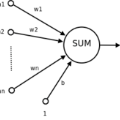Edge Computing (EC) is about remodeling the way data is handled, processed, and delivered within a vast heterogeneous network. One of the fundamental concepts of EC is to push the data processing near the edge by exploiting front-end devices with powerful computation capabilities. Thus, limiting the use of centralized architecture, such as cloud computing, to only when it is necessary. This paper proposes a novel edge computer offloading technique that assigns computational tasks generated by devices to potential edge computers with enough computational resources. The proposed approach clusters the edge computers based on their hardware specifications. Afterwards, the tasks generated by devices will be fed to a hybrid Artificial Neural Network (ANN) model that predicts, based on these tasks, the profiles, i.e., features, of the edge computers with enough computational resources to execute them. The predicted edge computers are then assigned to the cluster they belong to so that each task is assigned to a cluster of edge computers. Finally, we choose for each task the edge computer that is expected to provide the fastest response time. The experiment results show that our proposed approach outperforms other state-of-the-art machine learning approaches using real-world IoT dataset.
翻译:电磁计算( EC) 是关于重塑处理、 处理和交付数据的方式, 在庞大的多元网络中进行 。 EC 的基本概念之一是通过开发具有强大计算能力的前端设备, 将数据处理推向边缘边缘。 因此, 将中央结构( 如云计算) 的使用限制在需要时才使用。 本文提出一种新的边端计算机卸载技术, 将设备生成的计算任务指派给具有足够计算资源的边端计算机。 提议的方法根据硬件规格将边缘计算机集中在一起。 之后, 设备产生的任务将输入混合人工神经网络( ANN) 模型, 该模型根据这些任务预测具有足够计算资源的边端计算机的剖面, 即特性。 预测的边端计算机随后被分配到它们所属的集群, 这样每个任务都被分配到边端计算机群中。 最后, 我们选择每种任务中的边端计算机, 来提供最快的反应时间。 实验结果显示, 我们提出的方法比现实世界 IT 的数据学习方法其他状态。




